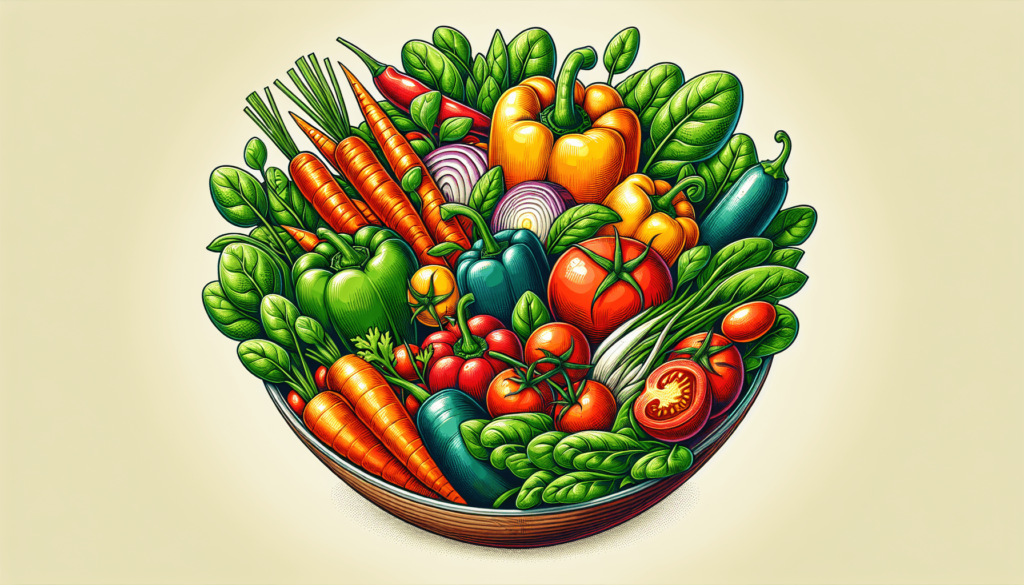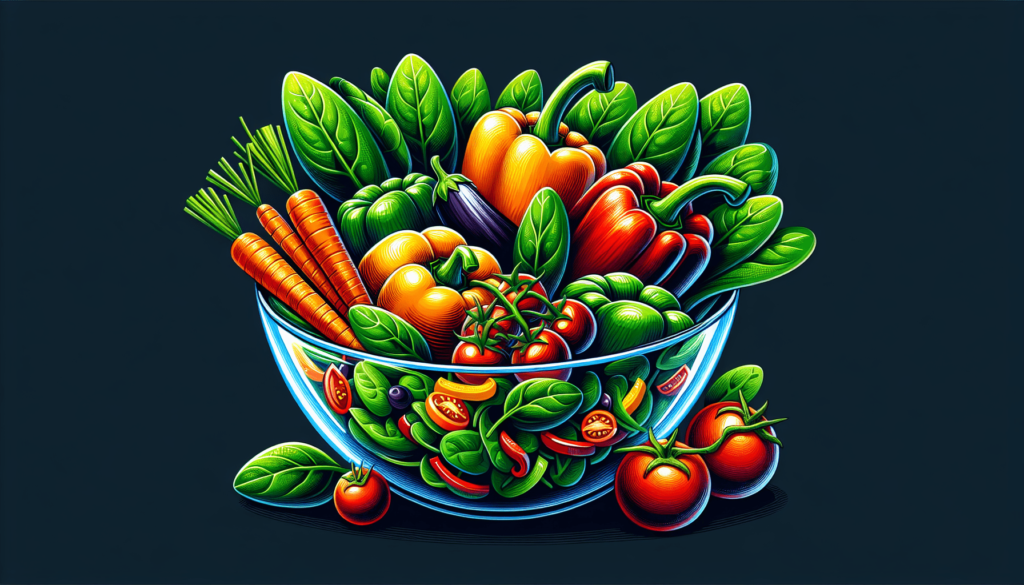Looking to give your diet a veggie boost but not sure where to begin? You’re in luck! Incorporating more vegetables into your meals doesn’t have to be a chore or a bore. With some simple, creative ideas, you can amp up your intake of these nutritious powerhouses effortlessly, making your meals more colorful, delicious, and healthy. Whether you’re remodeling your favorite dishes to include more greens or looking for sneaky ways to add veggies into every meal, the journey to a veggie-rich diet can be fun and fulfilling, enhancing not only the flavors on your plate but also your overall well-being.
Have you ever found yourself pondering, “How can I incorporate more vegetables into my diet?” You’re not alone! In a fast-paced world filled with convenient, processed foods, it can be quite challenging to make room for good old greens and vibrant veggies. But integrating more vegetables into your daily meals is easier than you might think, and the benefits are immense, not just for your health but also for your taste buds! Let’s delve into some practical, fun, and delicious ways to make vegetables a central part of your eating routine.

Why Bother Adding More Vegetables?
Vegetables Feed Your Body Right
Vegetables are powerhouses of nutrients, packed with vitamins, minerals, fibers, and antioxidants which contribute to robust health. They can help reduce the risk of chronic diseases such as heart disease, stroke, and certain cancers. Plus, their high fiber content can aid in digestion and help maintain a healthy weight.
Energy Level Boosts
Eating a diet rich in vegetables can boost your energy levels. This comes from their ability to improve nutrient absorption and stabilize blood sugar levels, thanks to their low glycemic index.
Impact on Mental Well-being
Recent studies have shown a correlation between high vegetable intake and lower levels of stress, anxiety, and depression. Vegetables have inherent properties that promote beneficial neurotransmitters, creating a natural, mood-enhanced diet.
Starting Simple: Easy Ways to Incorporate Vegetables
Tips for Breakfast
Start your day right by adding some greens to your breakfast. You could throw some spinach into a smoothie, add mushrooms and tomatoes to your scrambled eggs, or top your avocado toast with augurated greens.
Snack Time Upgrades
Replace your usual snacks with carrot or celery sticks, cherry tomatoes, or bell pepper slices. Dip them in hummus or a yogurt-based dip to increase your vegetable intake deliciously.
The Art of Adding Veggies to Your Lunch and Dinner
Experiment with Salads
Throw together a vibrant salad for lunch. Try combining different textures and colors to keep things interesting – think crunchy red cabbage, sweet orange carrots, and leafy greens like kale or swiss chard.
Cook Smarter
Steam, grill, or roast veggies to bring out their natural flavors. For roasting, just toss your veggies with a bit of olive oil, salt, pepper, and your favorite herbs, then pop them in the oven. This method not only preserves nutrients but also enhances flavor!
Get Creative with Veggie-Based Sauces and Soups
Puree cooked vegetables like carrots, tomatoes, or bell peppers to make nutrient-rich sauces and soups. These are great for adding depth of flavor and nutrition to various dishes without much added fat or calories.
Making Vegetables the Star of Your Plate
Embrace Meatless Mondays
Dive into vegetarian recipes once a week. Meatless meals will naturally increase your vegetable consumption and introduce you to new dishes. Think stuffed peppers, veggie lasagna, or cauliflower steaks – delicious!
Incorporate Vegetables into Traditional Dishes
Modify your favorite dishes to elevate their vegetable content. Add peas to your rice, blend cauliflower in your mashed potatoes, or include extra vegetables in your pasta sauces. It’s all about making those small tweaks.
Explore International Cuisine
Many global cuisines, like Mediterranean, Indian, or Thai, blend vegetables wonderfully into their dishes. Trying out different international recipes can expose you to unique ways to enjoy vegetables.
Overcoming Challenges: Common Barriers to Eating More Vegetables
Battling Boredom
It’s easy to get bored if you’re eating the same vegetables constantly. Challenge yourself to try a new vegetable each week – ever tried Jicama, Kohlrabi, or Romanesco? These have unique flavors and are fun to cook with.
Texture Issues
Some people avoid vegetables due to their texture. Experimenting with cooking methods can alter textures to your liking. For instance, if you dislike the mushiness of boiled Brussel sprouts, try roasting them for a crispy outside and a tender inside.
Flavor Enhancement Strategies
If your complaint about vegetables is that they’re bland, remember that herbs, spices, and simple dressings can significantly enhance their taste. Try drizzling some balsamic glaze over steamed broccoli or sprinkle some Parmesan on roasted cauliflower.

Supporting Your Vegetable Journey
Seasonal Shopping
Purchase vegetables that are in season. Not only are they more flavorful and nutritious, but they’re also generally more affordable. Seasonal produce supports local farming and reduces the environmental impact associated with transportation.
Grow Your Own
If space allows, start a vegetable garden. Homegrown veggies aren’t just fresher; they also encourage you and your family to eat what you produce – boosting your vegetable intake almost effortlessly!
Community Supported Agriculture (CSA)
Join a CSA program where you receive boxes of fresh produce directly from local farmers. This is a fantastic way to keep your veggie supply diverse and exciting every week.
Recipes to Get You Started
Here’s a quick, simple recipe that beautifully incorporates vegetables into your meals:
Easy Vegetable Stir-Fry
Ingredients:
- 1 tbsp of olive oil
- 2 cups of broccoli florets
- 1 bell pepper, sliced
- 1 zucchini, sliced
- 2 cloves of garlic, minced
- 2 tbsp of soy sauce
- 1 tbsp of sesame oil
- 1 tsp of cornstarch dissolved in 2 tbsp cold water
Instructions:
- Heat the olive oil in a large pan over medium heat.
- Add the garlic and sauté for about 30 seconds, or until fragrant.
- Add broccoli, bell pepper, and zucchini to the pan, and cook for approximately 7-10 minutes until vegetables are tender yet crisp.
- Mix in the soy sauce and sesame oil, then pour the cornstarch mixture to thicken.
- Serve the stir-fry over a bed of cooked rice or noodles.
Wrapping Up: Your Vegetable-Filled Future
Embracing more vegetables in your diet isn’t just about achieving a healthier lifestyle; it’s about enriching your culinary world and enjoying a variety of flavors and textures. By using the tips and tricks discussed above, you’re set to revamp your diet in a fun, delicious, and sustainable way. So, go ahead, give your plate a green makeover and enjoy the journey of discovering the vast world of vegetables!
